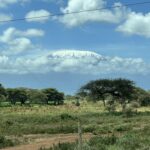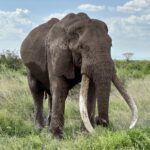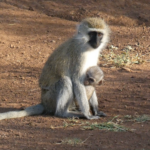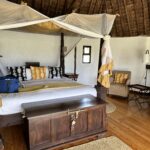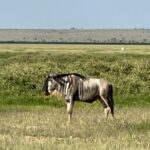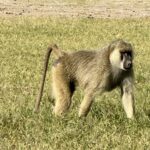http://sargeantstudios.net/?p=1445 After a great night’s rest and a delicious breakfast fireside at Karen Gables Lodge, we checked out and met up with George and his chariot at 7:30 AM. By the way, Kenyan coffee tastes great! George navigated city streets and took us onto the high speed road heading south to Amboseli National Park. From the high speed road we took a two lane highway, with vehicles of varying speeds. We were fortunate that George was at the wheel and he was not intimidated by the on-coming vehicles and was able to pass those that were much slower.
http://taltybaptistchurch.org/events/list/?tribe-bar-date=2018-02-20 On the ride we passed through little villages or townships, areas of on-street shopping, and some unusual vegetation. Along the road, we saw acacia trees, sisal trees (who knew that sisal grew on trees?), domesticated animals like sheep, goats, cows, and every now and then a dog decided to cross the road in front of us. About 10:30am we stopped so George could grab his favorite breakfast, naturally at a market and souvenir center. It also made a perfect rest stop for us!
We continued on to Amboseli National Park, catching a glimpse of Mount Kilimanjaro, the highest point in Africa and the tallest free-standing mountain in the world with an elevation of 19,341 feet, through the clouds. It is actually located in Tanzania, not Kenya and is a dormant volcano. The snow on the top of the mountain is actually a combination of snow and ice cap. It is a hiking and climbing center, though we will be staying with our feet on the ground in Kenya and not attempting a Kilimanjaro climb on this trip.
Amboseli National Park is the land of giants and was practically unscathed by the ivory poaching of the 1980’s. It still harbors some of the region‘s oldest and bulkiest elephants, sporting tusks with dimensions unseen in other areas. For example, we were introduced to Craig, whose tusks are so long that when he walks, he must lift his head or his tusks drag into the ground. Craig must be 40-50 years old. Elephants get 6 sets of teeth, a set lasts every ten years. So I guess they have a limited life span of about 65-70 years.
Amboseli is a patchwork of unfenced dusty plains and marshland and protected by buffer reserves on land owned by the Maasai. It has been a game reserve since 1899, and became a national park in 1974. On the way into our lodge, the Tawi Lodge, we were fortunate to grab a glimpse of elephant, giraffe, gazelle, zebra, monkeys – and we weren’t even on a game drive yet. George took our Land Rover with its four wheel drive through the plains to get close to the elephants!
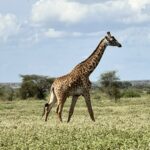
Rothschild Giraffe
We checked into Tawi Lodge, received a complete orientation from the staff and checked out our home for the next two nights. We are in a separate cabin tent with fireplace, sitting area, bedroom, bathroom with a soaking tub, and a separate walk-in shower. Caution: we must close the zippers at our entrance or the black face monkeys (Vervet Monkeys) will break into our cabin. Jokingly, Jackson told us that they want to travel/fly and will steal our passports, in addition to tearing the place apart. So, keep the zipper closed when we are there, and when we leave, place all three zipper pulls in a clip on closure to lock it.
After settling in, we went back to the main lodge for a buffet lunch. Plans were made that we would meet up with George for an afternoon game drive at 3:30 PM with, hopefully, more sightings to come!
This afternoon was spectacular! We left Tawi Lodge with George at the wheel. He took us through the adjacent conservancy to Amboseli National Park. Along the way we encountered giraffe (this time the Maasai giraffe), elephants, zebra, wildebeest, impala, antelope, baboons, lots of birds – so different from what we’re used to seeing.
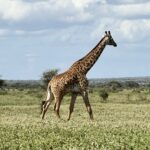
Maasai Giraffe
The African Elephant exists in a highly matriarchal society. They are very sociable and move about in clans. Females usually have offspring very five years or so. Their gestation period is 22 months. Males are normally booted out of the clan in their early teens, after which they roam around singly or form bachelor herds. The elephants we saw spend their days in the swampy marshland taking advantage of the vegetation as food. Toward evening they move across the road, heading toward the hills. We are currently in the dry season, even though it rained almost every day a few weeks ago, so the elephants are exhibiting their dry season behavior.
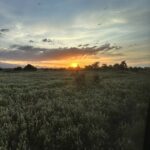 As we headed back to the lodge, the sun was setting on the savannah….
As we headed back to the lodge, the sun was setting on the savannah….

